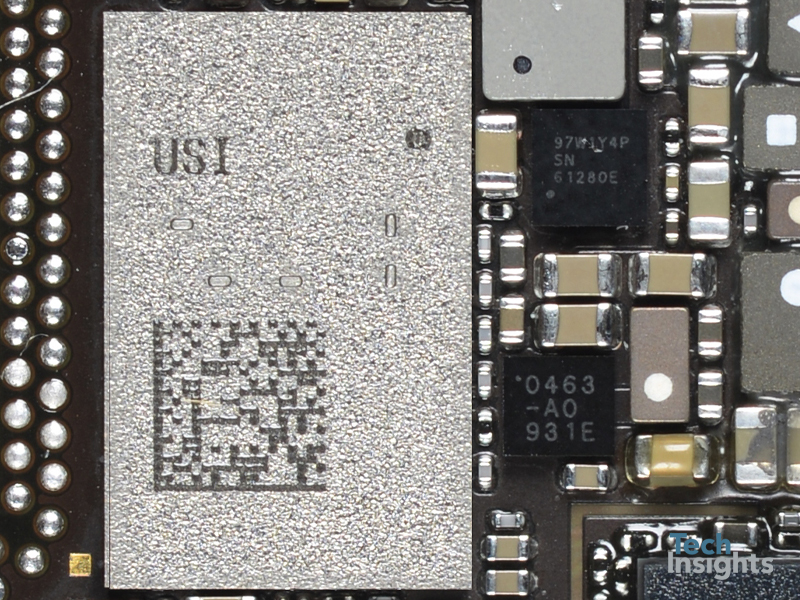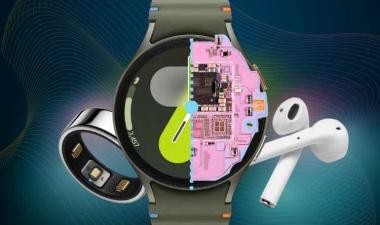Posted: November 8, 2019
Contributing Authors: Stacy Wegner
One of the most intriguing components included in the iPhone 11 is the mystery chip Apple simply labeled as ‘U1.’ TechInsights has been busily analyzing this part, and we are excited about what we are finding.
A quick summary of UWB technology:
- UWB does not interfere with other radio technologies like WiFi and Bluetooth
- Article 15 of the FCC regulations, Title 47, was specifically amended in 2002 to allow for the un-licensed use of UWB frequencies
- There are two main types of UWB:
- Impluse Radio (IR) UWB - data sent on pulses of 2ns width
- Multi-carrier(MC) UWB – one data stream is split into multiple, parallel data streams on differenct frequencies
Most IoT devices rely on WiFi, Bluetooth, and even 4G and 5G technologies. By 2022 it is believed the average US home will have over 12 connected devices per person. Since UWB does not interfere with any of other radios, it is an interesting and promising alternative to connecting devices, people, and data. From what we found during our research into the possible use-cases Apple has planned for UWB, the U1 will have a much larger role in the IoT home than just transferring files from iPhone to iPhone.
UWB is not new. There are several UWB use cases. Interesting medical applications for UWB that have already been proposed by a couple of companiesare devices for monitoring heart and respiratory rates. UWB also has the potential to replace X-ray imaging. For commercial and industrial logistics, UWB devices can monitor personnel movements and track the shipments of a company’s assets in and out of a building.
Photo Evidence
During the September Apple event, almost in the center of the screen and in plain sight, there was the U1 chip… but it was not introduced. The omission was notable, as Apple usually explains new features in detail at their launch events.
Maybe the lack of an introduction to the U1 was meant as an homage to UWB technology itself; UWB will not disrupt other radio technologies like WiFi and Bluetooth, and UWB signals are virtually undetectable unless you are looking for them.
The launch event did include a couple mentions of the improved Apple AirDrop functionality, which is the only feature contributed by the U1 chip that Apple is actively promoting.
The Apple event was the first time in our long memory that a company (sort of) announced they were using UWB technology in a consumer product. UWB is used more widely in commercial applications; in our very large Teardown library, we have only seen one other consumer UWB product.
UWB Tracking In-Room and Around the World
The other consumer UWB device in our library is the Estimote Beacon from 2017. In each Beacon, we found four supported radios: Zigbee, Bluetooth, NFC, and UWB supported by a DecaWave UWB transceiver.
The entire use case for the Estimote is just for tracking both people and things, using the Time-of-Flight (ToF) method. Tracking is also a use-case which was explicitly defined in another Apple patent we found during our research for the Apple U1 chip.
Compared to the single-die DecaWave UWB transceiver, the Apple U1 is designed into a UWB module with additional internal components that also includes support from Qorvo and a few diplexers.
The small-sized Estimote Beacons are good examples of how multiple radios such as Bluetooth, Zigbee, NFC, and UWB can all be designed in small form-factor products without the radios interfering with one another. With Apple anticipated to release similar type of ‘tiles’ or ‘tags’, it will be interesting to see if their design incorporates multiple radios like the Estimote Beacons, or if they are dedicated UWB devices.
| Bluetooth 4 | Zigbee | UWB | |
|---|---|---|---|
| Frequency Range | 2.4 GHz | 868 MHz – 2.4 GH | 3.1 GHz – 10.6 Ghz |
| Typical Distance Range | 10 meters | Up to 70m (LoS) | 10 meters |
| Transfer Speed | 1M bit / second | 250K bit / second | 100M bit / second |
| Licensed Required? | No | No | No |
Other Companies Offering UWB Devices?
Apple is not the only one looking at UWB use cases; in 2015, Google filed a patent for beacons which could use UWB radios.
It is interesting to note where we did not find UWB; we did not find any Amazon patents describing ultra-wide devices. We do know Amazon has its own ideas regarding tracking people and things with a program they are calling ‘Sidewalk’. Amazon announced Sidewalk in September with a use-case scenario of tracking your pets. Sidewalk will operate in the 900 MHz range, closer to the LoRa radios used in the US.
More Apple UWB Devices?
To start off this section, we should note: a patent’s filings or approvals does not mean there will be a product, it only means an idea has been submitted to the patent office in order to protect a design, technique, or idea.
That being said, we found patents for a lot of Apple ‘ideas’ which specifically identify – or at least strongly indicate - UWB as a radio option for a device. The image below is from a patent filed back in 2017 with the US Patent office.
The annotations 110 and 120 in Figure 5 show what the U1 chip is used for today. We have not (yet?) seen the other items: a vehicular transponder, a pet collar, anchor nodes, a door lock, and yes, a thermostat.
We also found a patent filed by Apple that dates back to 2009, where they defined methods of tracking shipments, status of packages (i.e. was it dropped?), connected bandages, and even connected shoes. In these scenarios, Apple did not specifically mention UWB, just that the radios used in the scenarios would fall within those frequencies allowed by Article 15 of the FCC regulations, Title 47.
The Apple patent we found most interesting, with regards to UWB, includes the illustration shown in Figure 6:
Not only did it show UWB, but it shows a millimeter wave transceiver circuit. Another image from this same patent is shown in Figure 7:
This patent includes the number of wide-band antennas and ‘millimeter wave phased antenna arrays’. We wonder… in our quest to understand Apple’s plans for Apple UWB devices, did we also find their idea for the first Apple 5G iPhone? It would be an understatement to say we are really excited to teardown the Apple 5G iPhone next year.
What’s Next?
It is suspected TechInsights will have a few UWB devices to analyze before the Apple 5G iPhone gets to the market, and not just UWB devices from Apple. In the age of IoT, beacons like the Estimote, the rumored AirTag and Tiles, and the ones shown in the Google patent will have a major role for supporting so many connected devices.
If you are interested in TechInsights anlaysis on the U1 you can download our product brief which includes an overview of our analysis, several detailed package and die photos, as well as a discussion of UWB technology, and a comparison of the DecaWave DW1000 to the Apple U1. Apple U1 Ultra-Wideband (UWB) Analysis brief.
Apple U1 UWB Chip Analysis
Download TechInsights' brief on the Apple U1 UWB Chip, complete with die photos, a background on UWB technology, and details of our planned analysis for this part.















